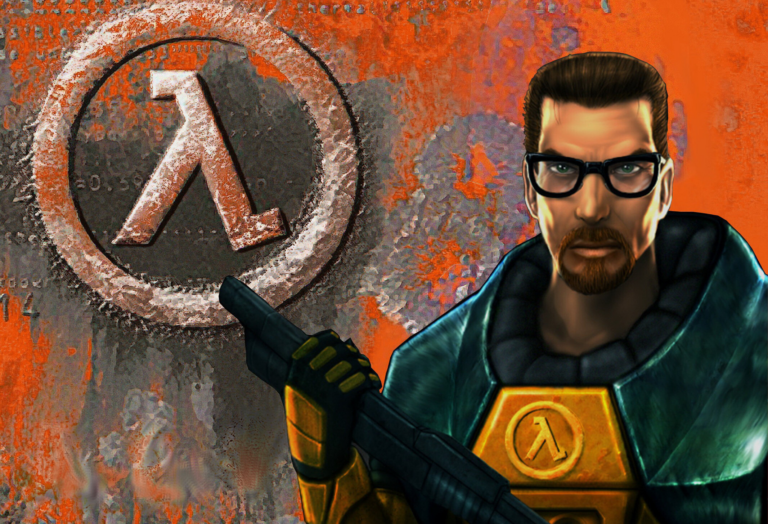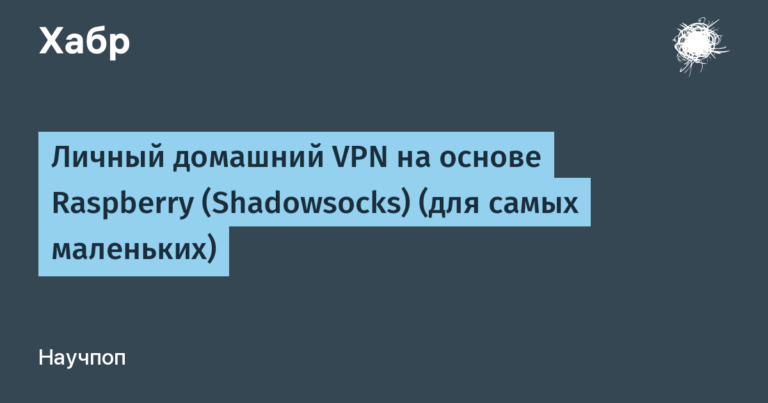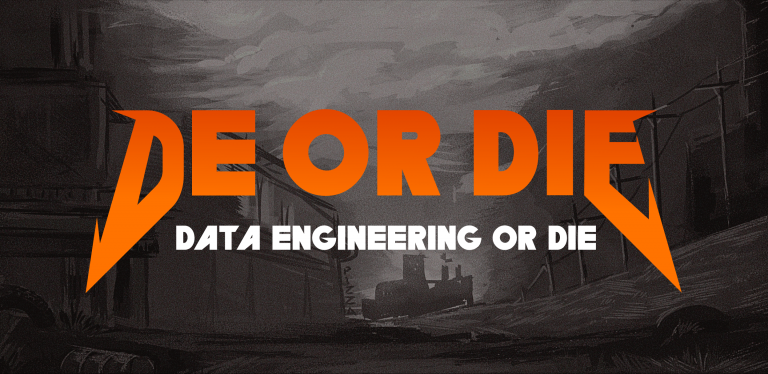Sundial
An old professor of astronomy rises to the pulpit: “I will not give you a lecture. I came to say goodbye. The clock stopped in my observatory today, which has been going on for almost three hundred years. I am sure: the end of the world has come!” The students giggled and hooted. Shouts, screams: “Buy yourself a Rollex!”, “Call the master!”, “Insert a new battery!” etc. When the noise died down, the professor spoke again: “And now I will say something else. Today my sundial stopped in the observatory.” (Joke)
Sundial has been widely used since ancient times. Despite the relative simplicity, there are many varieties of this device.

The simplicity of most sundial designs makes them very reliable, at least in clear weather.
In general, making a sundial is easy. [1-2]. In the design of any sundial, there must be a dial marked in a certain way and a gnomon, the shadow from which will play the role of an arrow. Probably the easiest option would be an equatorial sundial. The main advantage of such watches is a simple dial, which is divided into 24 equal sectors.
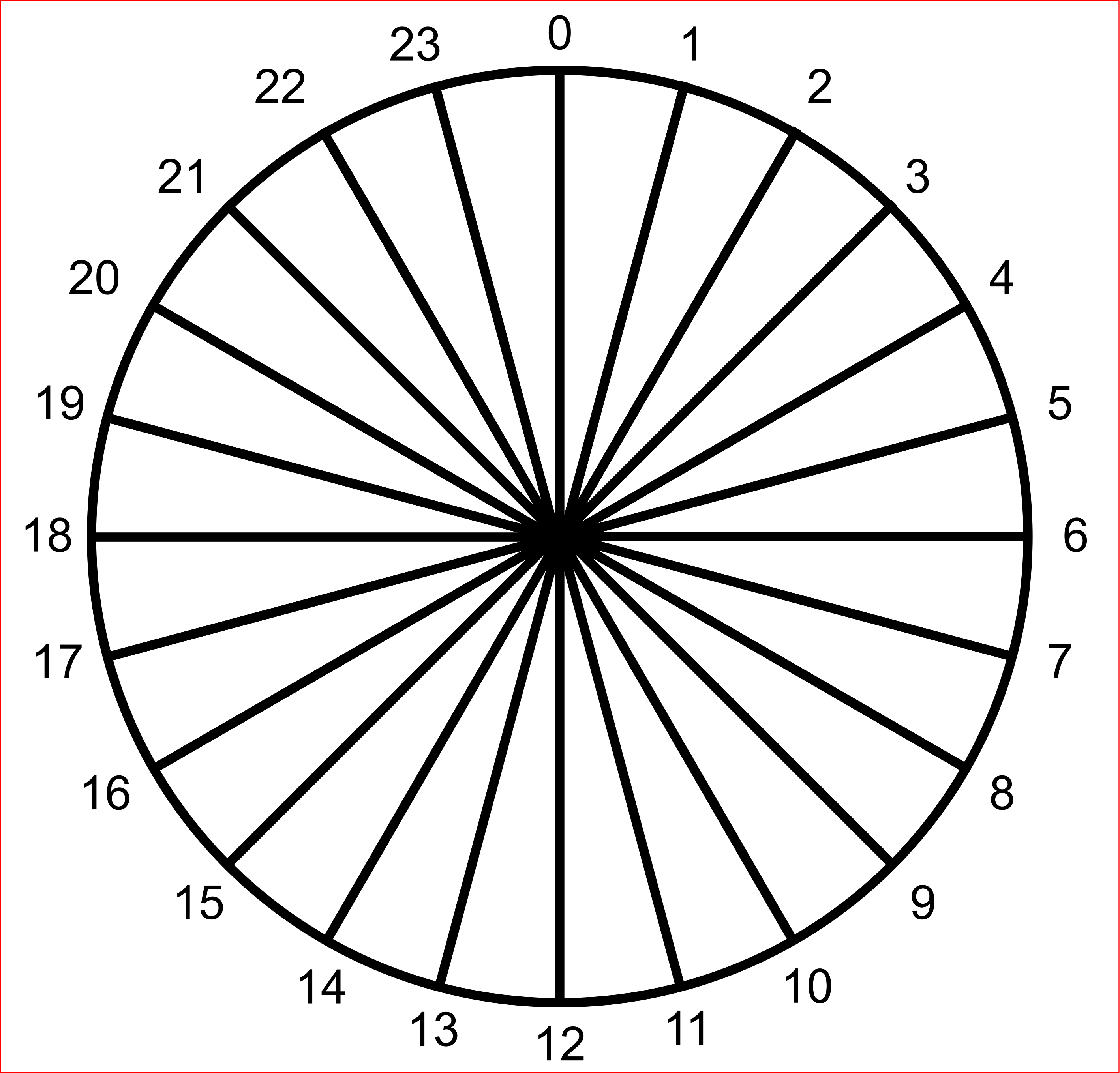
In the simplest case, the dial can be printed simply on paper or, as the author did, use a laser engraver. A gnomon is fixed in the center of the dial perpendicular to the plane of the dial. The author used an M3 x 40 screw.
The dial should be placed at an angle to the horizon equal to Where
– latitude of the place where the clock is set.
In this design, the required angle is set using a wedge.
Since the dial in this design is hinged to the base, when moving to another latitude, only the wedge will need to be replaced.
To set the clock, it is necessary to find a platform illuminated by the Sun, on which the clock must be oriented so that the line corresponding to 12 o’clock looks northward, i.e. was parallel to the noon line. The noon line is the line that connects the north point to the south point on the horizon. A shadow lies along it at true solar noon, i.e. at the moment when the sun is highest above the horizon, and the shadows are the shortest. At this point, the Sun is over the south, and the shadow of the gnomon will point north. In the simplest case, you can orient the sundial using a compass.
In general, in this case, the clock will be oriented not along the geographical, but along the magnetic meridian, which, of course, will introduce an error into the readings of the clock. However, this can be neglected, given that most often the direction to the north geographic pole and the magnetic pole approximately coincide, the thickness of the shadow cast by the gnomon is quite large, and the Sun does not actually move along the ecliptic quite evenly. This uneven motion of the Sun across the sky is explained, in particular, by the fact that its apparent motion depends not only on the rotation of the Earth, but also on the motion of the Earth in its orbit around the Sun. At the same time, the Earth’s orbit is an ellipse, although it differs little from a circle, which means that, in accordance with Kepler’s second law, the speed of the Earth’s movement in orbit changes. Strictly speaking, a sundial shows true solar time, which can differ markedly from the mean solar time that all conventional mechanical and electronic clocks keep. This difference varies depending on the current date. The difference between mean solar time and true solar time can be determined from the equation of time.
Where A
is the number of the day in the year.
Graphically, the equation of time can be represented in the following form.
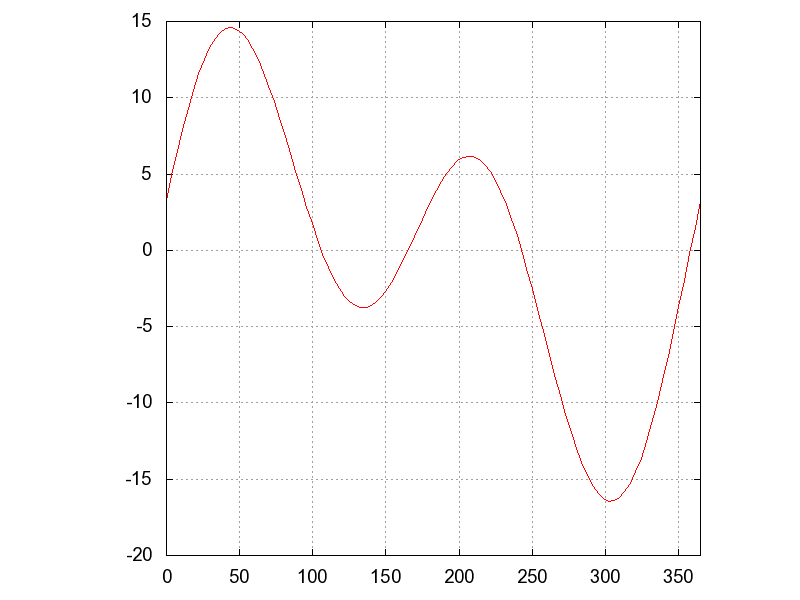
As can be seen on the graph, on different days of the year the difference between mean and true solar time can reach about +14.3 minutes (February 12) and -16.4 minutes (November 4), and four times a year, approximately April 15, 13 June, September 1 and December 25, it vanishes. It should also be borne in mind that at the time of writing this text, in most regions of Russia, local (legal) time is in effect, i.e. one hour is added to standard time. Thus, the true solar noon will occur around 13.00.
With a properly oriented clock, the gnomon will point to the North Pole of the World, located near the North Star.
The main disadvantage of a sundial of this design is that in the Northern Hemisphere they can only work from the day of the vernal equinox (March 19-20) to the day of the autumn equinox (September 22-23). For the other half of the year, the Sun for an observer in the Northern Hemisphere of the Earth rises too low above the horizon and its rays cannot illuminate the dial of such watches. This happens because the Sun at this time is in the southern hemisphere of the celestial sphere, and the dial of the inclined sundial is located in the plane of the celestial equator, i.e. the sun’s rays will illuminate it from below. In principle, markings can also be applied to the lower surface of the dial, but it is inconvenient to use it on small watches.
A more complex solution is a horizontal sundial, which does not have the disadvantage described above, but for the ability to work all year round you have to pay with a dial of a more complex type, which also changes depending on the latitude of the place where the clock is installed.

Similarly to the equatorial clock, the horizontal sundial should be set so that the line corresponding to 12 o’clock would look strictly to the north, and the gnomon of the horizontal sundial should be made so that its upper face is inclined to the horizon at an angle equal to the latitude of the area, i.e. looked at the North Star. Accordingly, the time must be counted according to the position of the shadow of the upper face of the gnomon.
The clock face from the figure above can be used if the clock is located in the band from 50 to 55 degrees north latitude. For other latitudes of the Northern Hemisphere, it will be necessary to change the angle of the gnomon and change the markings of the dial. This markup can be done according to the table, which is located in the book [1] on page 305. A description of the methodology for calculating horizontal sundial for an arbitrary latitude can be found in the book [2] on pages 260-261. A properly assembled sundial will run without additional winding and changing batteries until the merciless second law of thermodynamics takes its toll, at least until something happens. asteroid [3], volcanic [4] or nuclear [5-6] winter and there will be relatively clear skies overhead.
Sources.
Astronomy. Encyclopedia for children – M .: Avanta plus, 1998
Encyclopedic Dictionary of a Young Astronomer. Compiled by N.P. Erpylev – M .: Pedagogy, 1986
Rykhlova L.V. The problem of asteroid-comet hazard // Reshetnev readings. – 2010. – S. 677-679 (URL: https://cyberleninka.ru/article/n/problema-asteroidno-kometnoy-opasnosti/viewer)
The Yellowstone supervolcano has launched two “volcanic winters”. – url: https://nplus1.ru/news/2017/10/26/yellowstone
Nuclear winter and its computer simulation in the 80s. – URL: https://habr.com/ru/companies/ruvds/articles/668256/
Tarko A.M., Parkhomenko V.P. Nuclear winter: background and forecasts // Biosphere. – 2011. – v.3. – No. 2. – pp.164-173 (URL: https://cyberleninka.ru/article/n/yadernaya-zima-istoriya-voprosa-i-prognozy/viewer)
